how to draw 3d bodies in revit
3D Sketch
3D Sketch is used to edit a family or create a 3D object. In the Revit Platform API, you tin complete the 3D Sketch using the following classes.
- Extrusion
- Revolution
- Blend
- Sweep
In other words, in that location are four operations through which a 2D model turns into a 3D model. For more details nearly sketching in 2D, refer to 2nd Sketch.
Extrusion
Revit uses extrusions to ascertain 3D geometry for families. You create an extrusion by defining a 2nd sketch on a airplane; Revit then extrudes the sketch betwixt a kickoff and an stop point.
Query the Extrusion Form object for a generic form to employ in family modeling and massing. The Extrusion course has the post-obit properties:
Tabular array forty: Extrusion Properties
| Property | Description |
| ExtrusionStart | Returns the Extrusion Offset point. Information technology is a Double type. |
| ExtrusionEnd | Returns the Extrusion End point. Information technology is a Double type. |
| Sketch | Returns the Extrusion Sketch. It contains a sketch plane and some curves. |
The value of the ExtrusionStart and ExtrusionEnd properties is consistent with the parameters in the Revit UI. The following figure illustrates the corresponding parameters and the Extrusion result.
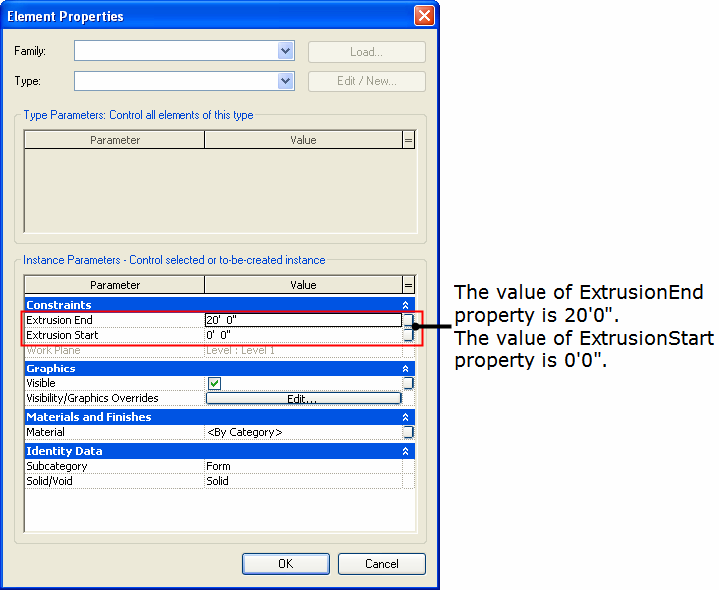
Effigy fourscore: Extrusion parameters in the UI
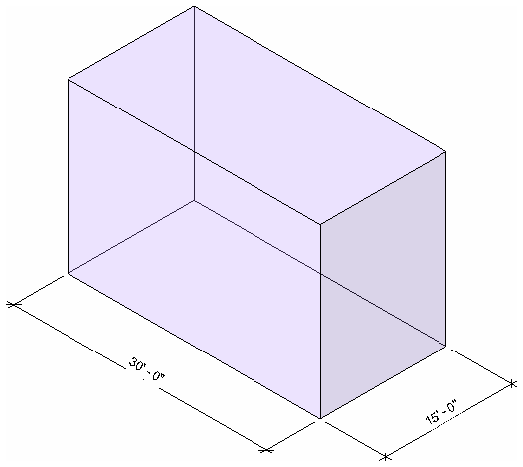
Figure 81: Extrusion result
Revolution
The Circumduct control creates geometry that revolves around an axis. You tin can use the revolve command to create door knobs or other knobs on furniture, a dome roof, or columns.
Query the Revolution Form object for a generic form to use in family modeling and massing. The Revolution class has the following properties:
Tabular array 41: Revolution Properties
| Property | Description |
| Centrality | Returns the Axis. It is a ModelLine object. |
| EndAngle | Returns the End Angle. Information technology is a Double blazon. |
| Sketch | Returns the Extrusion Sketch. Information technology contains a SketchPlane and some curves. |
EndAngle is consistent with the same parameter in the Revit UI. The post-obit pictures illustrate the Revolution respective parameter, the sketch, and the result.

Figure 82: Respective parameter
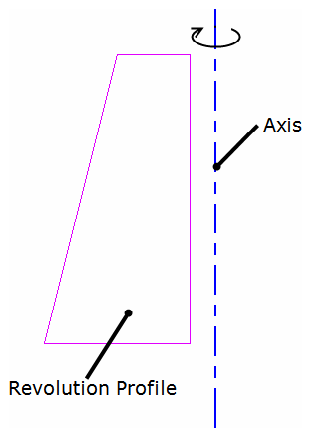
Effigy 83: Revolution sketch

Figure 84: Revolution upshot
Notation:
- The Start Angle is not accessible using the Revit Platform API.
- If the End Angle is positive, the Rotation direction is clockwise. If it is negative, the Rotation direction is counterclockwise
Blend
The Alloy command blends 2 profiles together. For case, if you sketch a large rectangle and a smaller rectangle on elevation of it, Revit Architecture blends the two shapes together.
Query the Blend Form object for a generic form to use in family modeling and massing. The Blend class has the following properties:
Table 42: Blend Properties
| Belongings | Clarification |
| BottomSketch | Returns the Lesser Sketch. It is a Sketch object. |
| TopSketch | Returns the Top Sketch Blend. It is a Sketch object. |
| FirstEnd | Returns the First End. It is a Double type. |
| SecondEnd | Returns the Second End. Information technology is a Double blazon. |
The FirstEnd and SecondEnd holding values are consistent with the same parameters in the Revit UI. The following pictures illustrate the Blend corresponding parameters, the sketches, and the result.
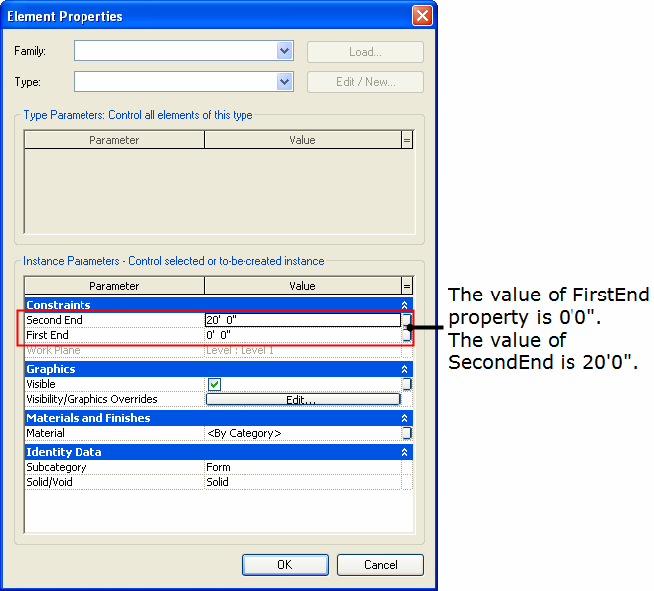
Effigy 85: Alloy parameters in the UI
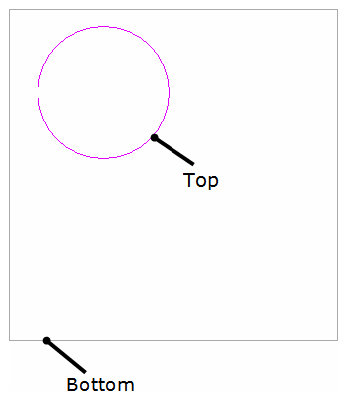
Effigy 86: Alloy meridian sketch and bottom sketch
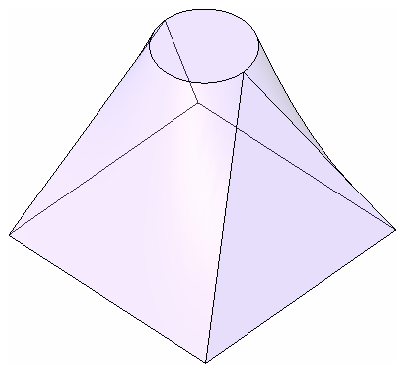
Effigy 87: Blend consequence
Sweep
The Sweep command sweeps one profile along a created second path or selected 3D path. The path may be an open or airtight loop, just must pierce the profile aeroplane.
Query the Sweep Form object for a generic form for use in family unit modeling and massing. The Sweep class has the following properties:
Table 43: Sweep Backdrop
| Holding | Description |
| Path3d | Returns the 3D Path Sketch. It is a Path3D object. |
| PathSketch | Returns the Plan Path Sketch. It is a Sketch object. |
| ProfileSketch | Returns the profile Sketch. It is a Sketch object. |
| EnableTrajSegmentation | Returns the Trajectory Sectionalisation state. It is a Boolean. |
| MaxSegmentAngle | Returns the Maximum Segment Angle. It is a Double type. |
Creating a 2nd Path is similar to other forms. The 3D Path is fetched by picking the created 3D curves.
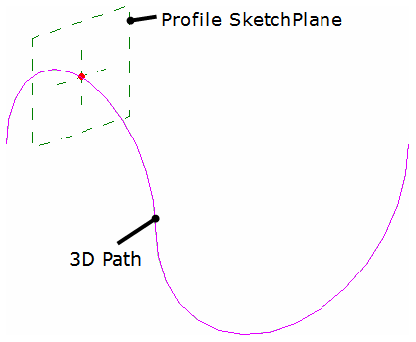
Figure 88: Pick the Sweep 3D path
Note: The following information applies to Sweep:
- The Path3d property is available simply when you use Option Path to get the 3D path.
- PathSketch is available whether the path is 3D or 2D.
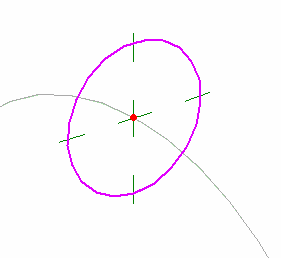
Figure 89: Sweep profile sketch
Note: The ProfileSketch is perpendicular to the path.
Segmented sweeps are useful for creating mechanical duct work elbows. Create a segmented sweep by setting two sweep parameters and sketching a path with arcs.
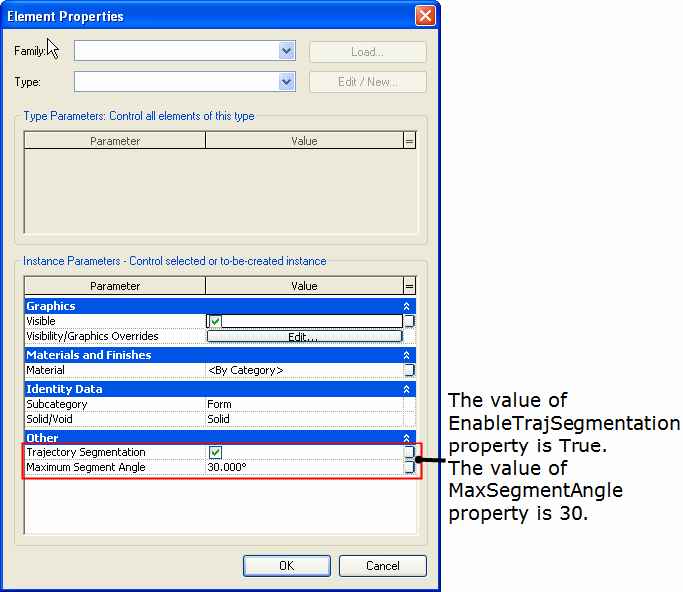
Figure ninety: Respective segment settings in the UI
Note: The following information applies to segmented Sweeps:
- The parameters touch on but arcs in the path.
- The minimum number of segments for a sweep is two.
- Change a segmented sweep to a non-segmented sweep by clearing the Trajectory Segmentation check box. The EnableTrajSegmentation property returns faux.
- If the EnableTrajSegmentation property is simulated, the value of MaxSegmentAngle is the default 360°.
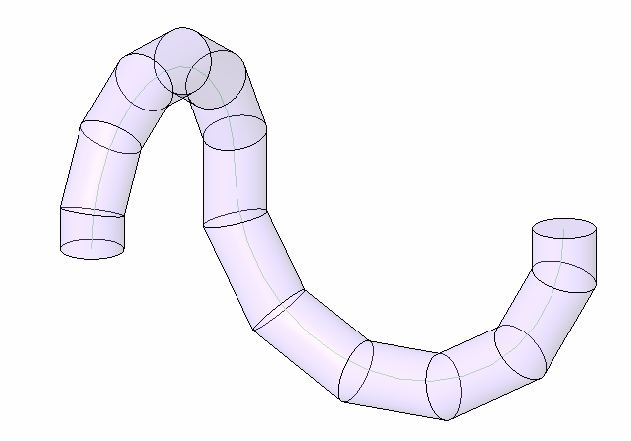
Effigy 91: Sweep consequence
robinsonatephy1951.blogspot.com
Source: https://knowledge.autodesk.com/support/revit/learn-explore/caas/CloudHelp/cloudhelp/2014/ENU/Revit/files/GUID-F689E2FE-9527-4F43-80D3-5D698C60FDAA-htm.html
0 Response to "how to draw 3d bodies in revit"
Postar um comentário